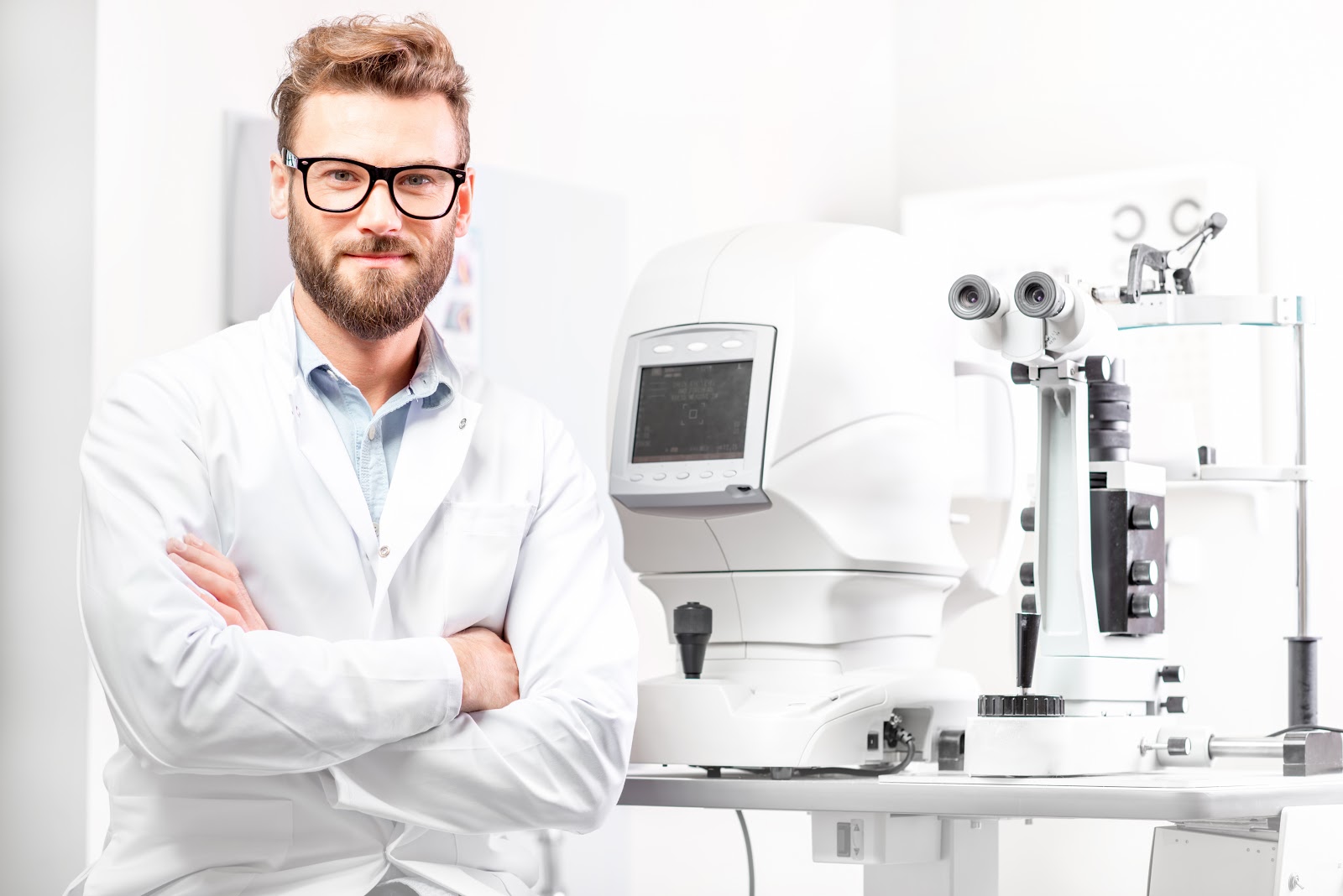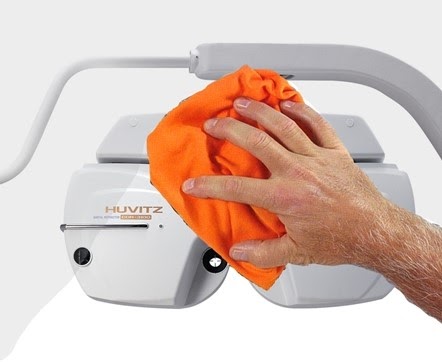
by
Veatch Ophthalmic Instruments | Monday, October 5, 2020 |

Your equipment is the lifeblood of your ophthalmic practice. Without it, you would be unable to examine, diagnose, and treat your patients to preserve their healthy vision.
If some components stop working, or if a device breaks down altogether, your practice could lose significant revenue while you wait for your equipment to be repaired or replaced. As a result, patient satisfaction can suffer and referrals may drop off.
Lucky for you, there are plenty of things you can do to extend the life of your equipment—beginning with keeping clear and detailed records for each piece of equipment you purchase.
With each new device, carefully review the maintenance and warranty information so you know what is required and what to expect if something stops working. Then, create a calendar and mark important dates for cleaning, diagnostic testing, and maintenance. Put the calendar in a place where you and your staff will always be able to see it and take action or schedule maintenance as necessary.
Most equipment will need very little service or repair in the first three years.
Pieces should perform well with routine maintenance and cleaning, though certain pieces may require more service and attention.
For example, equipment that is moved frequently has a higher risk of damage to small pieces and may need to be recalibrated if jostled. The best course of action is to avoid moving equipment around too often, and to keep an eye out for any irregularities.
To protect your investment and extend the life of your equipment, incorporate the following tips into your everyday routine.

- Treat your ophthalmic equipment with care.
The small parts that make up each piece of equipment are highly sensitive and often have very delicate components. Lubricate movable parts as needed, but always refer to advice from the manufacturer about what type of lubricant to use for which piece of equipment.
Make sure that each time you use your equipment, you are only using it in the recommended manner, with the proper steps and protocol for operation. For tools and smaller handheld instruments, always be sure to put them back in their allotted spaces, rather than leaving them lying on desks or in pockets.
- Protect optical surfaces.
Many pieces of equipment include mirrors, prisms, lenses, beam splitters, windows, and glass plates, and most often they were developed using extensive preparations. Surfaces are highly polished to prevent any warping or irregularities, and some pieces are coated to ensure that the surface is optimally prepared for use. Because different pieces of equipment use different chemical coatings, always refer to the manufacturer recommendations before cleaning.
Never wipe dust from an optical surface, as the particles can cause scratches that can negatively affect the results from the piece of equipment. Because even the slightest touch can affect the integrity of an optical surface, always hold them by the edge, while wearing gloves or using a tissue to prevent oils from touching the surface.
- Be smart about power sources, cords, and fuses.
There are several different power sources you may find yourself using regularly. If you are using a wall socket, make sure that your equipment has the same voltage; otherwise, seek out an appropriate transformer. Use surge protectors for computerized equipment, and consider a voltage stabilizer when appropriate.
Regularly inspect electrical cords for corrosion; if any is found, scrape or file it from the cord contact points. To avoid damaging them, never pull cords from the power source by the wire itself.
Fuses keep electrical currents from being overloaded, so it is important to use the correct amperage for each piece of equipment and never bypass the fuses. You should always keep extra fuses on hand in case you need them.
- Safeguard your bulbs and batteries.
When you change your bulbs, make sure the equipment is off and unplugged, and that the bulbs are cool. Use the correct bulb for each socket, and try not to touch the surface of the bulb because oil deposits on your fingers can leave permanent marks and may cause shadows.
Bulbs should be regularly inspected to make sure there is no corrosion. If any corrosion is found, it can be scraped off; if it is only on one side, shift the bulb one half turn. Also review the filaments for continuity and check the welding points.
Always keep voltages at the lowest possible setting. If there is a power surge, you don't want it to blow out your bulbs. If you are using a piece of equipment (such as a microscope) and the lamp is on, avoid moving it because even the slightest movement can crack or break the bulb filament.
Many handheld instruments use batteries. Always make sure rechargeable batteries are fully drained before being recharged, and keep in mind that as time passes, the lifespan of the battery will gradually get shorter. Regularly inspect both traditional and rechargeable batteries for corrosion, and remove batteries from equipment that is not being used to avoid corrosion.
- Protect your equipment even when you're not using it.
When equipment is not in use, be diligent about keeping each piece covered. This will help prevent dust as well as fungus (which can cause costly damage to lenses). Porous cloth covers are preferred for covering equipment, and silica gel packs may be used for pieces that need to be kept in sealed containers. Always keep your equipment in a dry location, and use a dehumidifier if necessary.

Equipment that is well cared for will always hold up better over time.
Sure, accidents and anomalies may happen, but that's why you should always have a qualified service and repair company on speed dial—one that understands how each piece of ophthalmic equipment works and all the intricate parts that make it as accurate and effective as possible.
For over 30 years, Veatch Ophthalmic Instruments has been providing best-in-class service and support to eye care professionals across the country. Our technicians have more than 60 years of combined experience and are skilled at working with highly technical pieces. We offer both local and remote assistance, and we even have a loaner program should your piece need more extensive service or repair (meaning you never have to worry about a lapse in business).
Remember, an ounce of prevention is worth a pound of cure.
Maintaining your equipment to the highest degree not only extends its functionality, but it also preserves its resale value. This allows you to replace your existing equipment for less and upgrade to better technology with a lower capital outlay.
Veatch offers a preventative maintenance package for your entire exam lane to ensure the long life of your ophthalmic equipment. It includes cleaning and adjusting the exam chair, stand arms, and mechanisms, as well as cleaning and adjusting the slit lamp and projector, checking the calibration of the equipment, and cleaning and adjusting the refractor.
Contact one of our expert technicians today at (800) 447-7511.